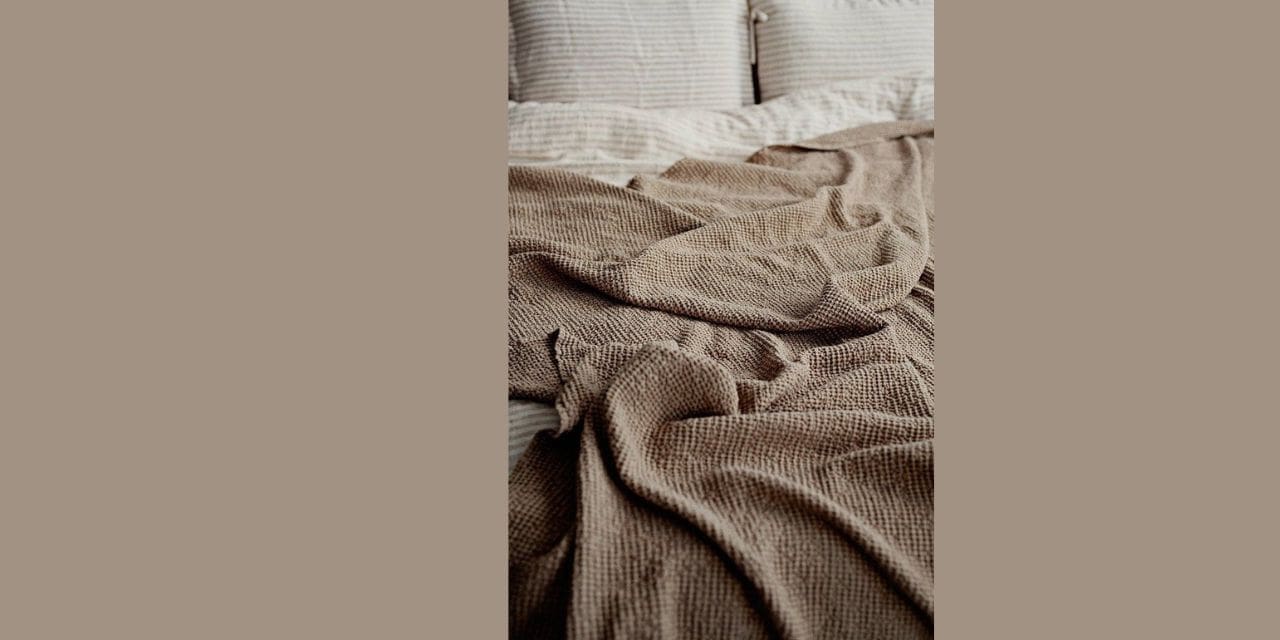By Tanvi Munjal
Bed linen is an essential component of the textile industry, encompassing a wide range of products designed to enhance the comfort and aesthetics of sleeping spaces. This article delves into the various aspects of bed linen.
Industry Statistics
The global bed linen market is projected to grow significantly:
- The market size was valued at $23.64 billion in 2021.
- It is expected to reach around USD 41.3 billion by 2028, growing at a CAGR of about 6.77%.
[Source: technavio]
Factors driving this growth include increasing consumer awareness about sleep quality and rising disposable incomes, which lead to higher spending on home textiles.
Historical Context and Evolution
Origins of Bed Linen
Bed linen’s history traces back to ancient civilisations, with the earliest evidence dating to Egyptian dynasties around 3400 BCE. Egyptians used fine linen made from flax, symbolising purity and wealth. The Roman Empire further developed textile techniques, introducing more sophisticated weaving and dyeing methods that revolutionised bedding production.
Historical Material Progression
- 3400 BCE: Linen from flax
- 1st Century CE: Wool and cotton introduction
- 18th Century: Industrial Revolution transforms textile manufacturing
- 20th Century: Synthetic fibres emerge
- 21st Century: Advanced blended and performance textiles
Items that Come Under Bed Linen
Bed linen encompasses a variety of textile products designed to cover and adorn beds, providing both comfort and aesthetic appeal. Below is a comprehensive list of items that fall under this category, along with their descriptions.

Materials Used in Bed Linen
The choice of materials significantly influences the quality and appeal of bed linen. Here are the primary fabrics used:
- Cotton: The most popular choice due to its breathability and softness. Varieties include:
- Egyptian Cotton: Known for its long fibres, it offers exceptional softness and durability.
- Pima Cotton (Supima): Features long-staple fibres that provide a luxurious feel.
- Regular Cotton: Affordable and comfortable, typically with a thread count between 200-400.
- Linen: Made from flax fibres, linen is appreciated for its breathability and moisture-wicking properties. It softens with use and is known for its durability.
- Polyester: A synthetic option known for durability and ease of care, often blended with cotton to enhance longevity.
- Bamboo: An eco-friendly alternative that offers breathability and natural moisture-wicking capabilities.
- Silk and Sateen: These materials are used for luxury bedding and provide a smooth finish and elegant appearance.
Advanced Fabric Construction Techniques
Weaving Technologies
- Plain Weave
- Twill Weave
- Satin Weave
- Jacquard Weave
- Advanced Computer-Controlled Looms
Surface Treatment Innovations
- Mercerization
- Enzyme washing
- Nano-finishing
- Antimicrobial treatments
- Flame-retardant coatings
Production Process of Bed Linens
The production of bed linens involves a series of well-defined steps, each utilising specialised machinery and equipment.
#1. Raw Material Preparation
The production process begins with preparing raw materials, primarily cotton fibres or synthetic materials like polyester. The quality of these raw materials significantly impacts the final product.
Machines Used:
- Cotton Ginning Machines: These machines separate cotton fibres from seeds.
- Bale Openers: These are used to fluff and open bales of cotton or synthetic fibres.
Major Brands:
- Maharaja Ginning & Pressing Works, Saurashtra Cotton Ginning Machinery
#2. Yarn Spinning
After preparing the fibres, they are spun into yarn. This process involves twisting fibres together to create a continuous strand.
Machines Used:
- Ring Spinning Machines: These are commonly used for spinning yarn due to their efficiency and quality.
- Open-End Spinning Machines: Used to produce coarse yarns quickly.
Major Brands:
- Rieter, Trützschler
#3. Weaving
Step Explanation: The spun yarn is then woven into the fabric using various techniques, such as plain or sateen. This step is crucial as it determines the texture and strength of the bed linen.
Machines Used:
- Air Jet Looms: These looms use air to insert the weft yarn into the warp yarn, allowing for high-speed weaving.
- Rapier Looms: Utilize a rapier mechanism to carry the weft yarn across the loom.
Major Brands:
- Picanol, Toyota Industries Corporation
#4. Fabric Finishing
Once woven, the fabric undergoes finishing processes to enhance its appearance and feel. These include dyeing, printing, and applying chemical finishes for softness or stain resistance.
Machines Used:
- Dyeing Machines (Jet Dyeing Machines): Used for dyeing fabrics uniformly.
- Calendaring Machines: Used to smooth and finish fabric surfaces.
Major Brands:
- Thies GmbH & Co. KG, Fong’s Europe GmbH
#5. Cutting and Sewing
After finishing, the fabric is cut into specific sizes for sheets, pillowcases, and duvet covers. The pieces are then sewn together to create finished products.
Machines Used:
- Fabric Spreading Machines (e.g., EXTENDOR): For spreading and cutting fabric accurately.
- Sewing Machines (Lockstitch Sewing Machines): Used for stitching fabric pieces together.
Major Brands:
- Jofesa Textile Machinery, LIDEM Machinery Solutions
#6. Quality Control and Packaging
The final step involves inspecting the finished products for quality assurance before packaging them for distribution. This ensures that only high-quality bed linens reach consumers.
Machines Used:
- Inspection Tables with Lighting Systems: For thorough quality checks.
- Packaging Machines (Flow Wrapping Machines): These are used to package finished products efficiently.
Major Brands:
- Packtech Engineering Systems Pvt Ltd., Somic Packaging Pvt Ltd.
SWOT Analysis of the Bed Linen Industry
Strengths
|
Weaknesses
|
Opportunities
|
Threats
|
Conclusion
The bed linen industry is a dynamic segment of the textile market that reflects historical craftsmanship while adapting to modern consumer demands. It continues to evolve with a focus on quality materials, innovative production techniques, and sustainability. Understanding this value chain—from raw materials through production processes to major players—provides valuable insights into an industry that plays a crucial role in enhancing our daily lives through comfort and style.

